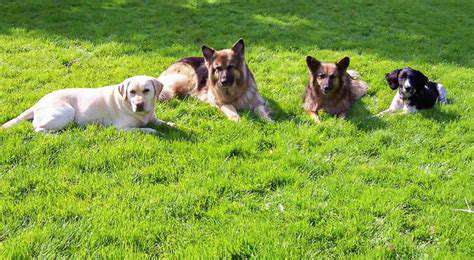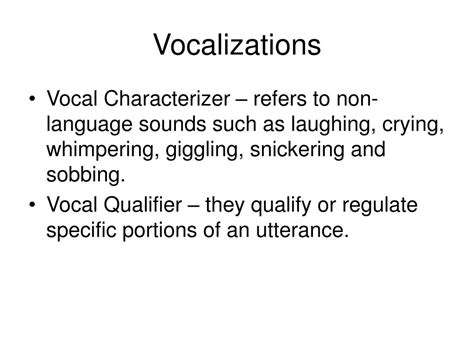Understanding Your Puppy's Body Language During Socialization
Directory
Puppies express comfort through relaxed postures and wagging tails
The direction of tail wagging reflects emotional states: right side for happiness, left side for anxiety
Facial expressions reveal emotions: relaxed indicates comfort, squinting may suggest unease
Curled bodies and tucked tails often indicate stress or fear in puppies
Barking and whining vocalizations need to be interpreted in context
Direct eye contact may constitute a threat, while avoiding eye contact suggests fear
Play interactions cultivate puppies' confidence and social skills
Aggressive postures may stem from fear or territorial awareness
Positive reinforcement builds trust and good behavior during training
Gradual exposure to new environments enhances puppies' adaptability
Expressions of Happiness and Comfort
Comfort Signals in Body Posture
When puppies naturally extend their limbs and have relaxed muscles, they usually indicate they are in a comfortable state. At this time, their tails tend to show a gentle wave, and their ears hang naturally. Dog training experts from the American Kennel Club emphasize that this relaxed state is an important foundation for puppies to establish social relationships, which facilitates positive interactions with other peers.
If a puppy's back fur is raised (known as \hackles up\), and its tail is stiff like a flagpole, it often indicates anxiety. Owners are advised to carry calming toys to promptly redirect the puppy's attention during outdoor activities. It can be helpful to record videos of puppies in different scenarios, allowing for comparative analysis to better grasp their emotional changes.
Tail Language and Expressive Codes
Recent animal behavior studies reveal that when a puppy's tail wags to the right, the left hemisphere of its brain is active (corresponding to positive emotions), whereas when it wags to the left, the right hemisphere predominates (corresponding to negative emotions). This finding explains why puppies often exhibit irregular tail wagging in unfamiliar environments.
In terms of facial expressions, a naturally drooping mouth and relaxed muscles around the eyes represent the best state. When a puppy frequently blinks or exhibits \whale eye\ (showing the whites of its eyes), owners should be on alert. Animal psychologists recommend spending 10 minutes each day engaging in gentle eye contact training with puppies to significantly enhance their emotional stability.
Warning Signals of Stress and Fear
Physical Stress Alarms
Curled-up, ball-like postures are typical signs of fear, during which puppies' spines arch noticeably, and their paws clench the ground. Case reports from veterinary medical journals indicate that puppies who remain in this state for extended periods have a 47% increased risk of developing separation anxiety later in adulthood.
The position of the tail is a crucial indicator: completely tucked between the legs indicates extreme fear, while a half-dropped position suggests uncertainty. Owners are advised to carry a blanket with familiar scents and wrap the puppy in it during stressful situations to mimic the comforting effects of a mother dog's embrace.
Vocal Communication of Crisis Signals
Sharp, short barks (similar to \Woof! Woof!\) are often triggered by sudden stimuli, while prolonged whining (\oo---\) usually indicates ongoing discomfort. Interestingly, the simulated low growls of puppies during play are often accompanied by exaggerated bodily movements, which are distinctly different from real threatening growls.
The Animal Acoustics Laboratory at the University of Tokyo has found that puppies' help-seeking vocalizations are concentrated in the frequency range of 2000-4000Hz, which effectively triggers humans' caretaking instincts. Upon hearing such distress signals, it is advisable to immediately check for environmental stressors.
Bi-Directional Interpretation of Eye Contact
Sustained staring can increase a puppy's heart rate by over 20%, while rapid blinking (more than 15 times a minute) is a sign of goodwill. Trainers recommend a three-second rule: keep each eye contact session to no more than three seconds, then look away and provide a reward to help the puppy establish a safe connection.
Pupil dilation exceeding 1.5 times the normal size indicates a surge in adrenaline. At this time, the current activity should be interrupted immediately, and the puppy should be guided to a sniff search game using treats to calm their emotions.
Behavioral Adjustment in New Environments
Faced with unfamiliar places, puppies might repeatedly lick their noses or yawn frequently—these calming signals indicate self-regulation. The 321 gradual approach is recommended: stay in the new location for 3 minutes on the first visit, increase to 5 minutes the following day, gradually building adaptability.
Carrying items that have the mother dog's scent can reduce environmental stress responses by 33%. Experienced breeders recommend playing various environmental sounds to familiarize puppies with different noises before they are fully vaccinated.
The Boundary Between Playful Interaction and Aggressive Posturing

Golden Rules for Healthy Interactions
- Pausing and restarting during play is a healthy sign
- Taking turns in offense and defense reflects good social skills
- Self-restraint in biting levels indicates emotional stability
A typical play invitation posture involves the front limbs lowered, hindquarters raised, along with bouncy side-to-side movements. If intermittent play dead behavior (suddenly rolling over to expose the belly) occurs, it indicates a relaxed and enjoyable atmosphere. Scheduling at least three social play interactions with different companions each week can significantly enhance puppies' conflict resolution abilities.
The Cambridge University Canine Cognition Research Center found that puppies that frequently give up during play score higher in leadership assessments as adults. It is recommended to insert pause commands during the climax of play (such as at the height of a chase) to train emotional regulation abilities.
Key Points in Recognizing Aggressive Postures
- Staring for over 5 seconds enters the danger zone
- Pulling back lips to reveal all incisors
- Paw pads fully open and gripping the ground tightly
True precursors to aggression exhibit a freeze-explode pattern: the puppy first stiffens for 2-3 seconds, then suddenly lunges to bite. At this point, avoid direct physical obstruction and instead use noise distraction (e.g., shaking a coin-filled container). Animal behavior correction specialists emphasize that post-event punishment exacerbates aggressive behavior; immediate redirection of attention is key.
Record the three essential elements of aggressive incidents: time and place, individuals/animals present, and antecedent events, which helps identify triggering patterns. To address territorial aggression, gradually expanding activity areas through a barrier method combined with scent-marking training can build a sense of security.
The Deep Meaning of Vocal Communication

Sound Spectrum Analysis
Analysis via spectrograph reveals that low-frequency whines (200-600Hz) are more prevalent during physiological discomfort, while intermittent barks (800-1200Hz) typically express social needs. Interestingly, puppies' ability to imitate their owner's voice peaks at 12 weeks of age, making this an ideal time for basic command training.
Howling-like long cries (lasting over 3 seconds) occurring at night could be related to separation anxiety. It is advised to place a toy mimicking a heartbeat in the sleeping area and conduct disappear-reappear training to reinforce their sense of security.
Contextual Interpretation of Sounds
- The low growl for guarding food during mealtime needs immediate correction
- Faux coughing during play might indicate excessive excitement
- Whimpering sounds during sleep are often a normal REM phenomenon
When a puppy overreacts to specific sounds (like vacuum cleaner noise), the three-step desensitization method can be employed: first, play a recording from a distance while simultaneously offering treats; gradually shorten the distance; finally, reward during actual use of the appliance. This process typically requires 2-3 weeks to establish a firm connection.
Building Confidence Through Positive Reinforcement
Key Practical Points of Reinforcement Training
The 3-second golden rule for immediate rewards: provide a reward within 1 second of the desired behavior appearing, and complete the full set of affirmations (verbal praise + petting + treats) within 3 seconds. Research shows that such immediate feedback can boost learning efficiency by 40%.
Establish a behavior token system: use different colored toys to represent levels of rewards, with red toys corresponding to basic rewards and gold toys redeemable for special privileges. This visual management can help puppies understand the value of behaviors.
Advanced Training for Environmental Adaptation
Utilize a challenge ladder model: break new environments down into 5 levels of difficulty. For example, adapting to cars: Level 1 - static contact with vehicles, Level 2 - engine starting, Level 3 - short distance travel, Level 4 - complex road conditions, Level 5 - long-distance travel. Each level requires 10 successful experiences to progress.
The five-day experiential method during the socialization golden period (12-16 weeks): Monday interact with children, Tuesday meet a person with crutches, Wednesday engage with someone wearing a hat, Thursday adapt to the sound of a wheelchair, and Friday experience opening and closing an umbrella. Keep each session under 15 minutes, and provide deep-sea fish oil treats afterward to promote neural development.
Tracking Training Effectiveness
Create a visual behavior thermometer scale: record the degree of improvement for specific behaviors on a 10-level scale. For example, a separation anxiety scale, with level 1 being quiet alone for 10 minutes, and level 10 being independently entering a resting area.
It is suggested to conduct monthly assessments of socialization skills, including stranger approach tests, unexpected noise reaction tests, and food temptation resistance tests. Compile the results into a radar chart for a visual representation of growth trajectories.